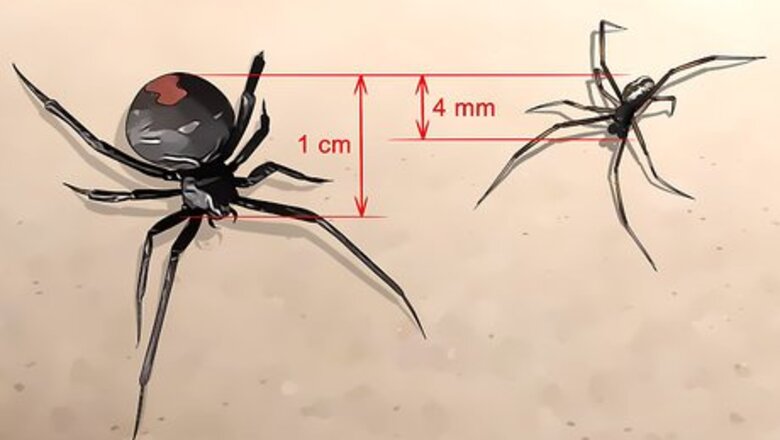
views
Looking at Physical Characteristics
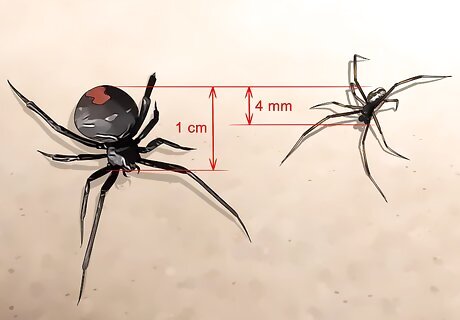
Assess the size of the spider. Female redback spiders are the size of a large pea, about 1 centimeter (0.4 in) long, and have slender legs about twice that length. Males are quite a bit smaller, about 3-4 mm long, with legs about twice their size.
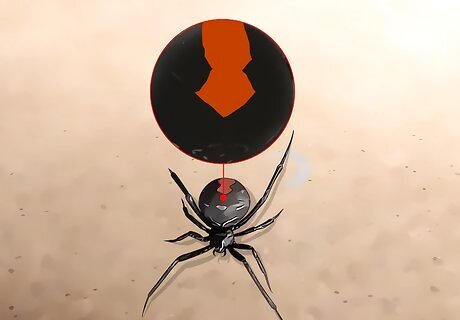
Look at the spider’s distinctive colorings. Females are black or brownish and usually, but not always, have an orange or red stripe running lengthwise on top of their abdomen, from the back to about halfway. The mark is typically thick and shaped a bit like an arrow pointing towards the spider’s head. Female redbacks also have an hourglass-shaped orange- or red-colored marking on the underside of their abdomen. Males are light brown with white markings and a paler hourglass mark on their belly. The redback spider is related to the black widow and looks similar, but is set apart by the dorsal red stripe on its back.

Differentiate between male and female to determine if the spider is dangerous. Only female redback spiders have venomous bites, so take extra precautions if the spider is black with distinctive red coloring. If you feel pain after being bitten by a male redback spider, seek medical attention just in case.
Recognizing the Redback Spider Habitat
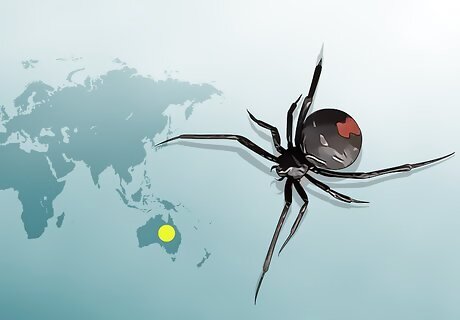
Be careful around small, sheltered areas in populated regions of Australia. Redback spiders like to hang around human-inhabited areas, and their webs are often found in dry, sheltered places like junk piles, sheds and toilets, or among logs, rocks and plants. Redback spiders are found across Australia, especially in hot regions. Though most common in Australia, redbacks can also be found in the north and south islands of New Zealand, in southeast Asia up to India, and even in south central Japan.
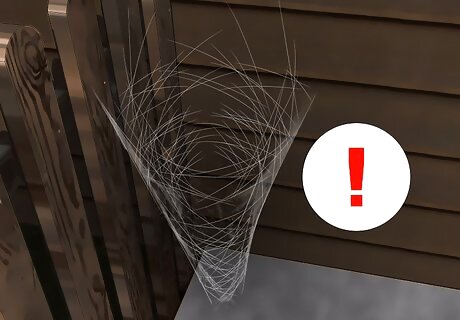
Avoid the spider’s tangled, funnel-like webs.(Redback spiders often have very untidy webs, but they are not usually funnel-shaped. Some redbacks set trap lines vertically so that if a small animal or arthropod bumps into one, the trap line will spring up due to the tension, bringing the prey with it.Leaves and other debris are often caught in the web strands, so that a web may be hard to see. Caution should be taken around any items that provide shelter for a redback. These may include outdoor furniture, the edges of buildings, shoes left outside, laundry items such as baskets or trolleys etc etc.) They often stretch from a wall down to the ground. The female redback spider rarely leaves her web, and a male may be found there as well, if it’s near the summer mating season. If you don’t want the spider to bother you, simply steer clear of its web! Redback spiders typically don’t live near each other by instinct, although there may be more than one in an area if that location is a particularly good place for a web, such as a corner of a shed or near low shelves.
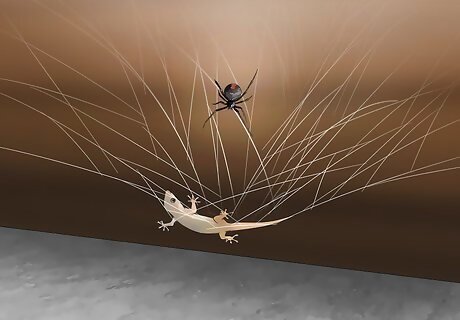
Look for the redback spider’s common prey and predators. Redback spiders typically prey on insects, but have been known to catch larger bugs and even lizards in their web as well. Their predators include daddy-long-legs spiders and white-tailed spiders.

Take precautions to protect yourself from redback spiders around your home. Turn off the lights on your porch, which attract the insects that redback spiders feed on. Wear gloves when you garden or handle wood, and peek into dark corners, like in a mailbox or shed, before reaching in.
Treating a Bite
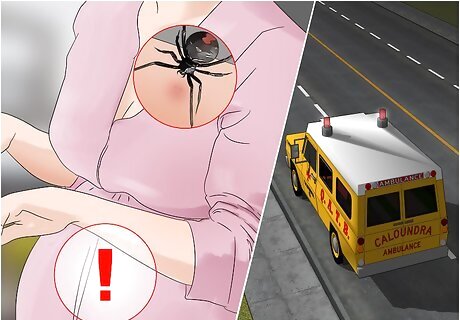
Call for medical attention if a child, elderly person or pregnant woman has been bitten. You can call an ambulance in Australia by dialing 000. Redback spider bites can be fatal in children, the elderly, and pregnant people, and you should call an ambulance if the person bitten is experiencing severe pain or has collapsed, regardless of their age. Remain calm and explain that someone has been bitten by what you believe is a redback spider and will need medical attention. Most Australian hospitals will have an anti-venom on-hand. Some healthy adults bitten by redback spiders experience little to no pain or other symptoms. It may not be necessary to go to the hospital in that case, although you should closely observe the bitten area and pay attention to how you feel overall. If the symptoms worsen, call for medical attention.

Recognize the primary symptoms. The effects of a redback spider bite differ between people, but you might experience sweating, weak muscles, vomiting, muscle spasms and pain around the bitten area. Stay calm and take deep breaths, as the symptoms should pass soon. If the symptoms are intense, painful, or show no signs of letting up, call for medical attention. while you wait for help to arrive.
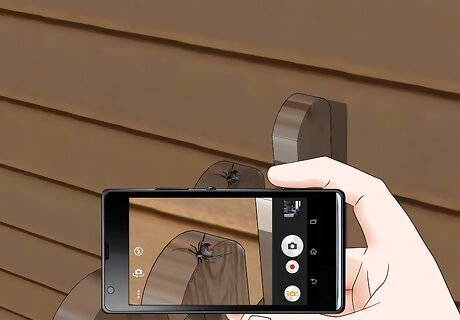
Take a photograph of the spider, or get a good look at it. Describe the spider or show the photo to the paramedics or the doctor when they arrive so they can confirm the species of spider and decide how to treat the bite. This is especially important if you can't easily identify the red abdominal marking on a female redback spider. Remember to stay back at a safe distance and don’t try to catch the spider.
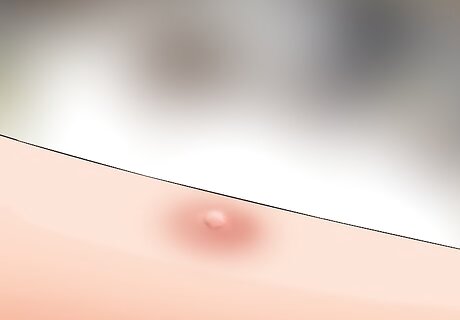
Look for a small bump and red skin as a mark of the bite. Redback spider bites don’t make a large mark on your skin, though you may see a small bump, or the area around the bite may become red and flushed. Recognizing the symptoms will be the best way to identify a redback spider bite if you weren’t able to get a good look at the spider.
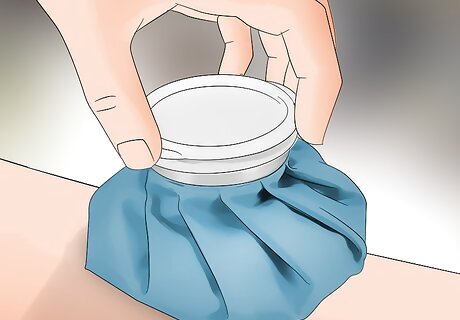
Apply ice to the bite to lessen the pain. If you don’t have ice, use the coldest water you can find. Don’t bandage the area where you were bitten, as the venom is slow-moving and compressing the area will only worsen the pain.

Expect the bite to remain red and itchy for a few days. If pain in the area or any other symptoms are still present after 7 days, call your doctor for further treatment.













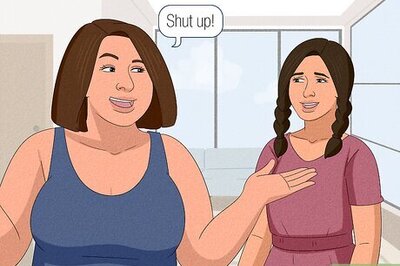





Comments
0 comment